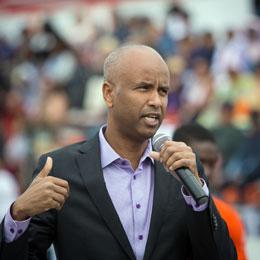Canada a role model for migration management

More and more women are finding themselves as the principal applicants in Canada’s Express Entry immigration process – a system for skilled immigrants who want to settle in Canada permanently and take part in the nation’s economy.
Under the Express Entry process, prospective immigrants to Canada are assigned a Comprehensive Ranking System (CRS) score to help the federal government assess and rank candidate profiles in the Express Entry pool.
Figures provided in the 2018 Express Entry year-end report reveal that the CRS scores of women are on par or even surpassing those of men.
The figures show a growing percentage of women are getting scores above 350 and the number of women with CRS scores above 400 has increased 56 percent since 2017.
Since January 3, 2019, 75 percent of the 39,273 female applicants fell in the CRS range between 350 and 449, compared to 71 percent of the 55,690 male applicants. There were more individual male applicants in the 350-449 range, but four percent more of women who did apply achieved this score.
Last year, in 2018, 70 percent of women in the Express Entry pool got over 400 CRS points, compared to 67 percent of male applicants. In the previous year, 2017, 62 percent of women in the Express Entry pool reached scores over 400.
Women who submitted profiles to the Express Entry pool in 2018 also claimed more additional points in the French-language proficiency category than men.
In terms of admissions of Express Entry candidates as new Canadian permanent resident, the report showed an increasing number of women being admitted to Canada as principal applicants through the Express Entry system.
It also appears that women from certain countries represent a greater proportion of principal applicant admissions than men.
The gender difference was most significant in applications from Jamaica where 67 percent of the principal applicants were women. The Philippines followed with 61 percent.
Women from China (55 percent), Russia (53 percent) and Korea (51 percent) also represented a greater proportion of Express Entry principal applicant admissions than men.
These various advancements by women in the Express Entry pool reflect recent data provided by Immigration, Refugees and Citizenship Canada (IRCC) that show the percentage of women admitted to Canada has been rising by one percent every year, since 2015, and now stands at 47 percent.
The latest figures come in the wake of a report by the Organisation for Economic Co-operation and Development (OECD) which hailed Canada’s economic immigration system as a ‘role model’ for its 36 member nations and for those looking to improve how they manage migration
Express Entry system called 'most elaborate selection system' in OECD
According to a new report, Canada has the “largest, longest-standing and most comprehensive and elaborate skilled labour migration system in the OECD,” whose members include Australia, France, Germany, the United Kingdom, and the United States.
The report commended Canada for its success in the realms of attraction, selection, integration and retention of economic immigrants and for promoting a “whole-of-family approach” that takes into account the needs of all family members — not just the principal applicant.
Among other strengths, Canada builds on “a welcoming host society, which considers immigration as a part of its national heritage,” the report says.
Thomas Liebig, a senior immigration specialist with the OECD, said the independent assessment of Canada’s economic immigration system is the tenth in a series of reviews performed by the OECD.
“So, Canada is not the only country we have done, but clearly Canada stands out for a number of reasons,” he said.
Top of mind for Liebig was Canada’s “constant drive for improvement based on solid evaluation and research.”
Liebig said this is most apparent in its approach to the Express Entry system, which manages the pool of applicants for three of Canada’s principal economic immigration programs — the Federal Skilled Worker Class, Federal Skilled Trades Class, and Canadian Experience Class.
The report calls Express Entry “the most elaborate selection system in the OECD,” one that allows for “a more refined selection of labour immigrants than in peer countries.”
Liebig said Canada’s Express Entry system serves as a “role model” for managing economic migration that many OECD countries look to for guidance.
In a statement, Canada’s Minister of Immigration, Refugees and Citizenship, Ahmed Hussen, said he was “honoured” that the OECD identifies Canada as a role model on successful migration management.
“Immigration is central pillar of this country’s future economic success and our government will continue to support immigration policies and programs that enhance the economic, social and demographic vitality of communities across Canada,” Hussen said.






